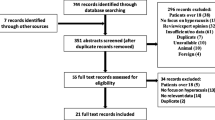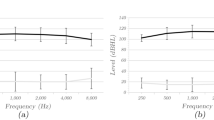Abstract
Objective
Hyperacusis, characterized by an abnormal sensitivity to everyday sounds, is a condition associated with subjective distress and physiological changes in the auditory system. Prevalence rates have varied significantly worldwide, emphasizing the need for standardized criteria. This study aimed to determine the prevalence of hyperacusis among high school students in Mysore district and explore gender differences.
Methods
A diverse cohort of 597 high school students participated in this cross-sectional study. The Modified Khalfa Hyperacusis Questionnaire assessed hyperacusis symptoms. Demographic data included age, gender, and educational status. A cut-off score of 28 on the questionnaire identified hyperacusis cases. Data were analyzed descriptively.
Results
The study revealed a substantial hyperacusis prevalence of 17.25% among high school students in the Mysore district. Out of 103 identified cases, 43.69% were females, and 56.31% were males. These results suggest a potential gender disparity in hyperacusis prevalence. The study’s findings highlight the high prevalence of hyperacusis among Indian high school students, emphasizing the need for attention to this issue in adolescent health. Gender differences observed in this study align with previous research, indicating a higher prevalence among males.
Conclusions
Hyperacusis is a prevalent condition among Indian high school students, warranting further research on its causes and co-occurrence across different age groups. These findings underscore the significance of addressing hyperacusis as a critical health concern among adolescents and emphasize the need for tailored interventions and increased awareness.
Similar content being viewed by others
References
Aryal S, Prabhu P (2022) Misophonia: prevalence, impact and co-morbidity among Mysore University students in India-a survey. Neurosci Res Notes 5(4):161–161
Baguley DM, Hoare DJ (2018) Hyperacusis: major research questions. HNO 66(5):358–363. https://doi.org/10.1007/s00106-017-0464-3PMID: 29392341; PMCID: PMC5928178
Jacquemin L, Mertens G, Van de Heyning P, Topsakal V (2023) Prevalence of hyperacusis: a systematic review. Otology Neurotology 44(3):252–260
Ren J, Xu T, ** review. Front Neurol 12:706555
Jacquemin L, van der Poel N, Biot L et al (2023) Prevalence of tinnitus and hyperacusis in 9–12-year-old children. Eur Arch Otorhinolaryngol. https://doi.org/10.1007/s00405-023-07995-x
Khalfa S, Dubal S, Veuillet E, Perez-Diaz F, Jouvent R, Collet L (2002) Psychometric normalization of a hyperacusis questionnaire. ORL 64(6):436–442. https://doi.org/10.1159/000067570
Smith AB, Johnson CD (2020) Gender differences in hyperacusis prevalence and perception: a review of the literature. J Auditory Res 10(2):45–58
Patel S, Gupta R (2019) Cultural influences on auditory sensitivity and discomfort: a qualitative exploration. Int J Cult Audiol 5(1):22–35
Acknowledgements
The authors acknowledge with gratitude Prof. M Pushpavathi, Director, All India Institute of Speech and Hearing, Mysore, affiliated to the University of Mysore for permitting to conduct the study at the institute. The authors would also like to acknowledge the participants for their co-operation.
Funding
There is no funding by any agency for the manuscript.
Author information
Authors and Affiliations
Contributions
P R Sujeet, was involved in study design, data collection, analysis of the results and writing the manuscript; Rachana Hanji was involved in study design, stimulus preparation, data collection, analysis of the data, interpretation and writing the manuscript; Kamalakannan Karupaiah was involved in study design, analysis of the results and writing the manuscript and Prashanth Prabhu, was involved in study design, data collection, analysis of the results and writing the manuscript.
Corresponding author
Ethics declarations
Conflict of Interest
The authors report no conflicts of interest. The authors alone are responsible for the content and writing of the paper.
Compliance with Ethical Standards
In the present study, all the testing procedures were carried out on humans using non-invasive techniques, adhering to the guidelines of the Ethics Approval Committee of the institute. All the procedures were explained to the participants, and informed consent was taken from all the participants of the study.
Additional information
Publisher’s Note
Springer Nature remains neutral with regard to jurisdictional claims in published maps and institutional affiliations.
Rights and permissions
Springer Nature or its licensor (e.g. a society or other partner) holds exclusive rights to this article under a publishing agreement with the author(s) or other rightsholder(s); author self-archiving of the accepted manuscript version of this article is solely governed by the terms of such publishing agreement and applicable law.
About this article
Cite this article
Sujeeth, P., Hanji, R., Karupaiah, K. et al. Estimation of Prevalence of Hyperacusis in High School Students of Mysore District. Indian J Otolaryngol Head Neck Surg (2024). https://doi.org/10.1007/s12070-024-04645-4
Received:
Accepted:
Published:
DOI: https://doi.org/10.1007/s12070-024-04645-4




